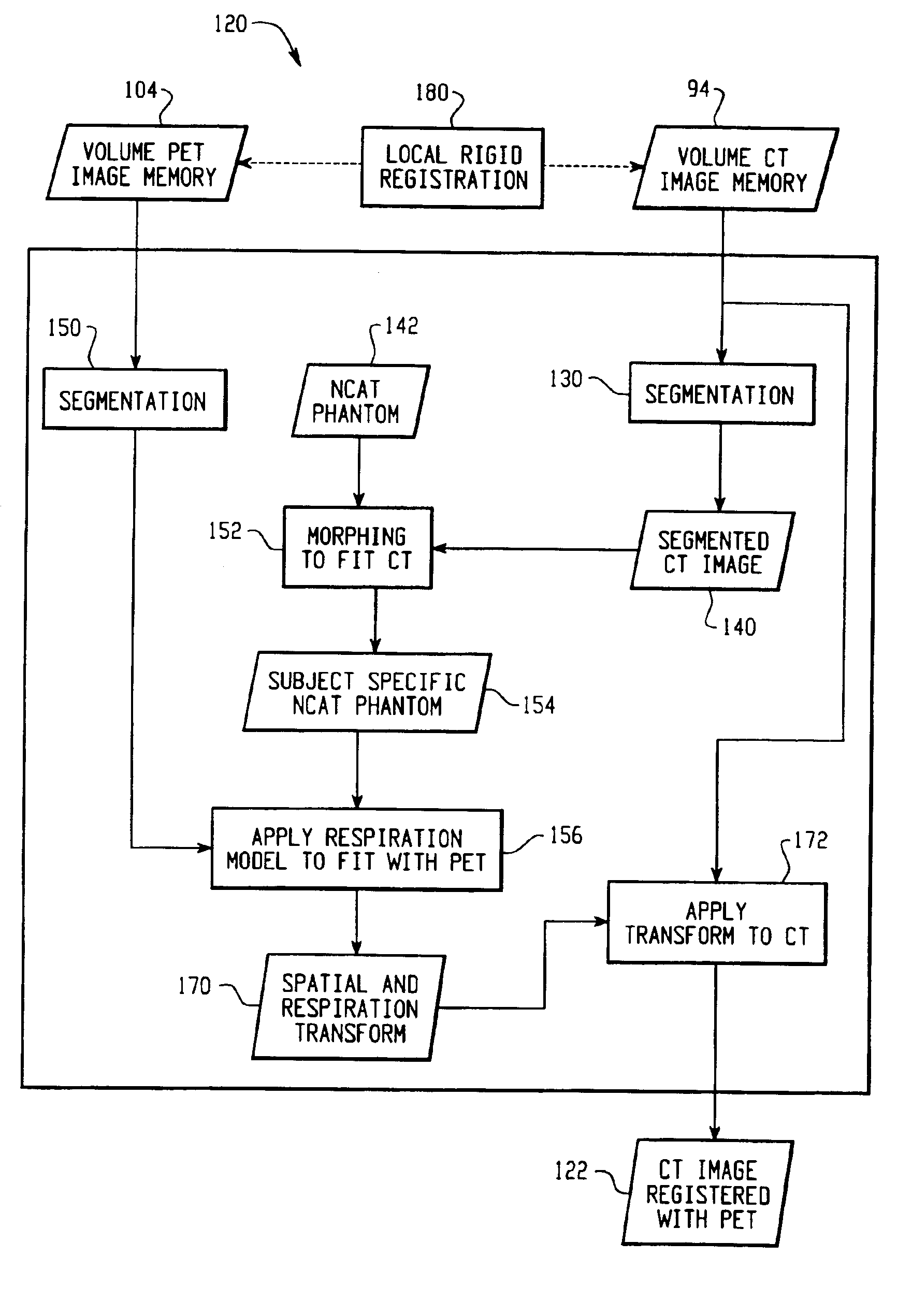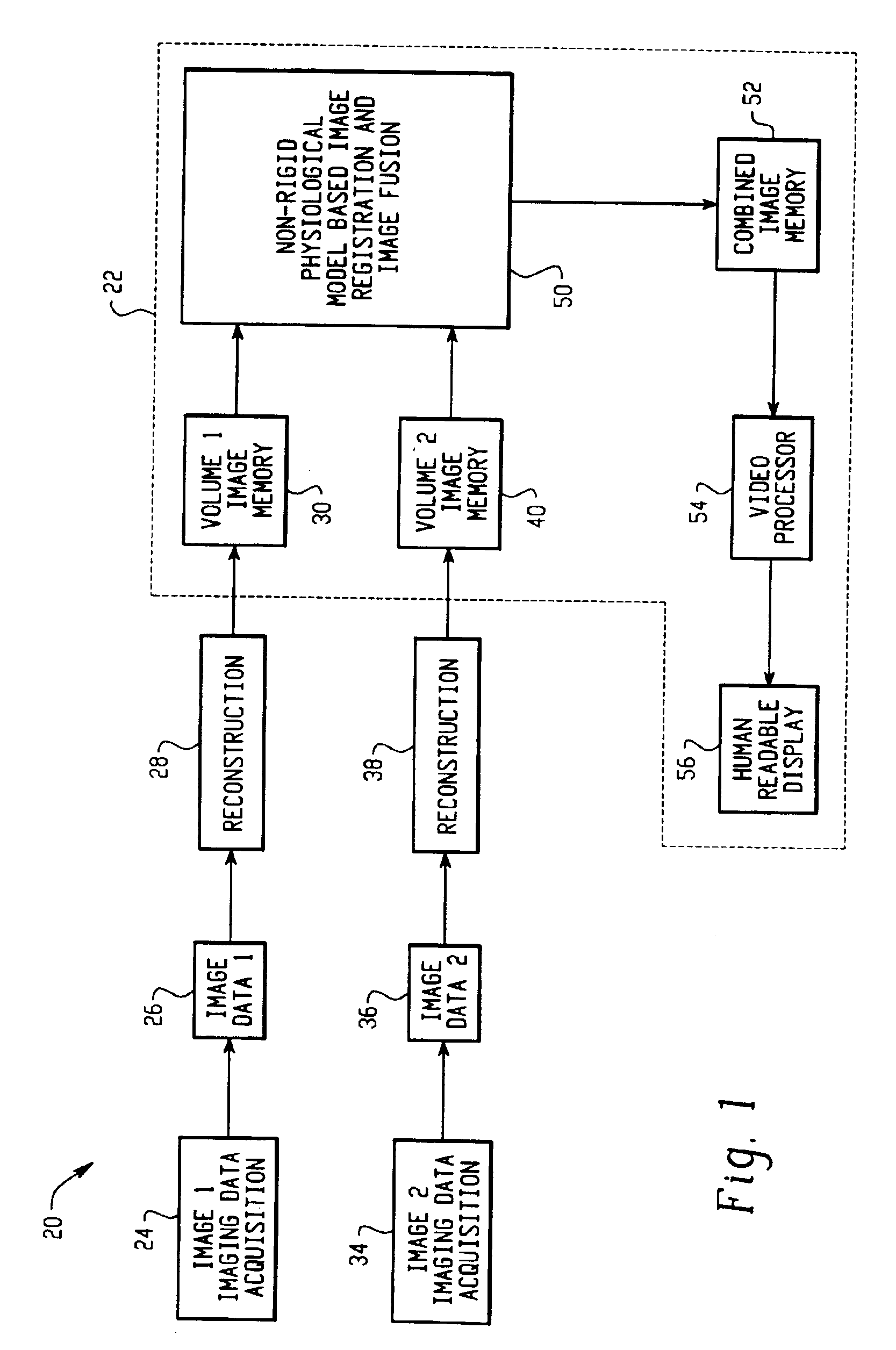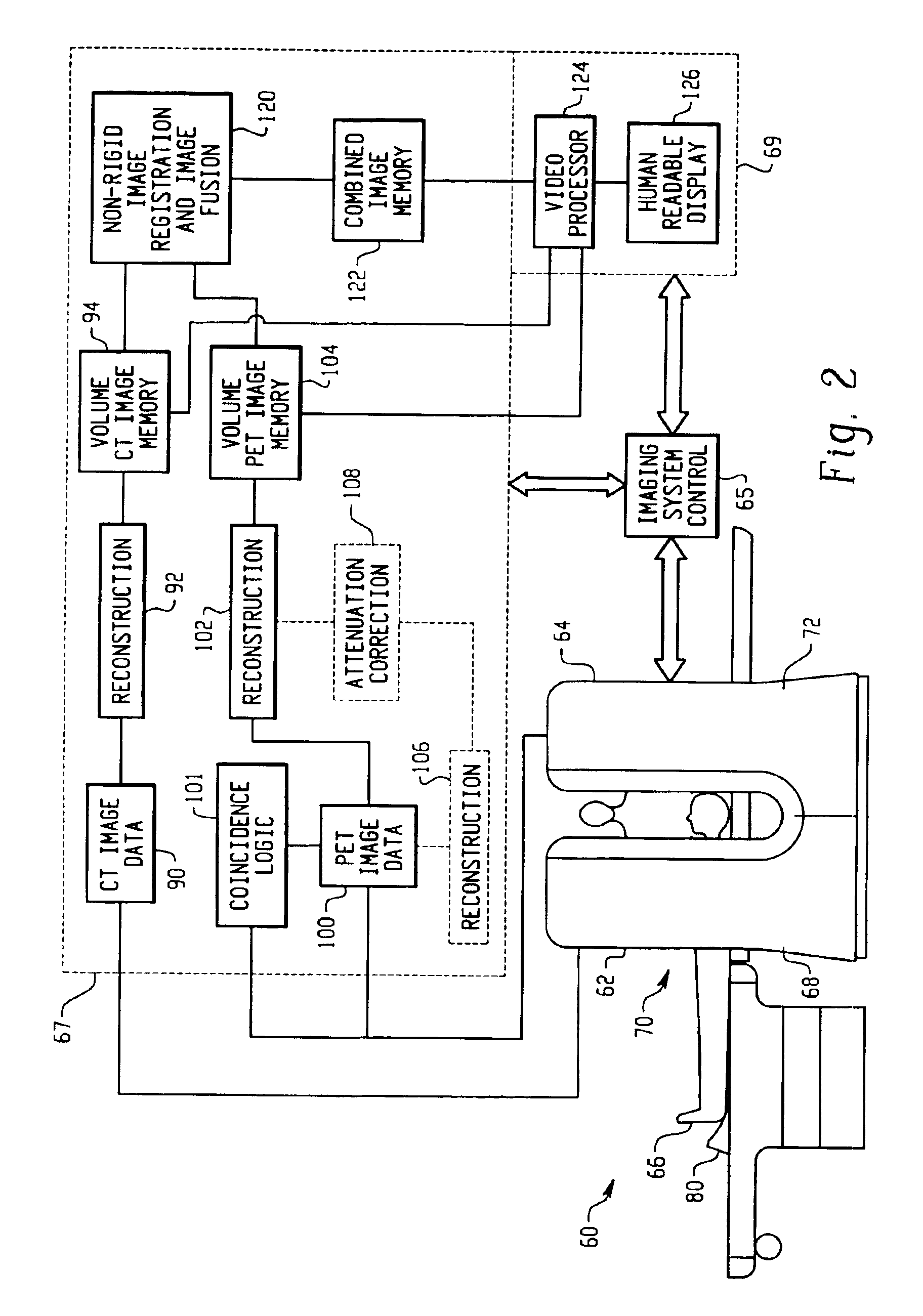Physiological model based non-rigid image registration
a physiological model and image registration technology, applied in image enhancement, nmr measurement, instruments, etc., can solve the problems of inability to register images with ease and accuracy, and the method is generally not very accurate,
- Summary
- Abstract
- Description
- Claims
- Application Information
AI Technical Summary
Problems solved by technology
Method used
Image
Examples
Embodiment Construction
[0025]With reference to FIG. 1, an image registration and fusion process 20 is shown with an image registration and fusion system 22 for providing combined images from two different imaging scans. A first scanning sequence 24 acquires and stores image data 26 in memory. The image data 26 is processed in a suitable reconstruction processor 28 for the particular imaging modality. The reconstructed image is loaded into a volume image memory 30. A second scanning sequence 34 acquires and stores image data 36 in memory. The image data 36 is processed in a suitable reconstruction processor 38. The reconstructed image is loaded into a volume image memory 40. The first and second scanning sequences 24, 34 can be monomodality or multimodality image scanning sequences. The volume image memories 30, 40 can be any suitable data storage device that can be in suitable data communication with the image registration and fusion system 22 including memory such as (i) disks, tape or other magnetic sto...
PUM
 Login to View More
Login to View More Abstract
Description
Claims
Application Information
 Login to View More
Login to View More - R&D
- Intellectual Property
- Life Sciences
- Materials
- Tech Scout
- Unparalleled Data Quality
- Higher Quality Content
- 60% Fewer Hallucinations
Browse by: Latest US Patents, China's latest patents, Technical Efficacy Thesaurus, Application Domain, Technology Topic, Popular Technical Reports.
© 2025 PatSnap. All rights reserved.Legal|Privacy policy|Modern Slavery Act Transparency Statement|Sitemap|About US| Contact US: help@patsnap.com



